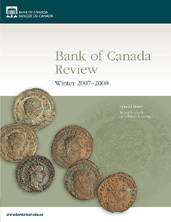Bank of Canada Review - Winter 2007-2008
Available as:
PDF
Cover page
Roman Antoninianus
The coins form part of the National Currency Collection of the Bank of Canada.
Photography by Gord Carter, Ottawa.
